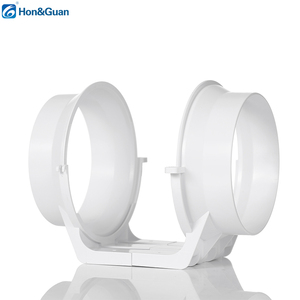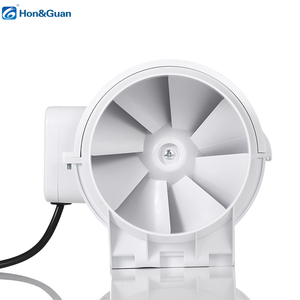
All categories
Featured selections
Trade Assurance
Buyer Central
Help Center
Get the app
Become a supplier

(57661 products available)













Market Overview: The global market for DC axial fans has witnessed steady growth, reflecting an increasing demand for efficient ventilation solutions. The overall market for ventilation fans was valued at approximately $2.1 billion in 2023 and is projected to reach $2.7 billion by 2030, growing at a CAGR of 3.6%, according to Global Industry Analysts. The axial fans segment, specifically, is expected to experience a growth rate of 4.1% during the same period, highlighting its significant role in the overall ventilation market. Regional insights reveal that the U.S. market was estimated at $541 million in 2023, while China is anticipated to grow at an impressive CAGR of 6.2%, reaching $592.6 million by 2030, fueled by industrial expansion and urbanization.
Industry Insights: The increasing need for energy-efficient cooling solutions in various applications is driving the demand for DC axial fans. Key players in the market are innovating to enhance performance and reduce energy consumption, responding to evolving consumer preferences for sustainable products. Furthermore, the rise of e-commerce and advancements in distribution channels are reshaping how these fans reach consumers, with a notable shift towards online platforms like Alibaba.com. As businesses prioritize operational efficiency and compliance with environmental regulations, DC axial fans are becoming essential in sectors such as automotive, industrial, and residential markets. Addressing customer pain points, such as noise reduction and energy efficiency, remains a focal point for manufacturers, thereby positioning the DC axial fan segment for sustained growth in the coming years.
A DC axial fan uses direct current to move air in the same parallel direction as the airflow. There are many types of DC axial fans based on their construction and application.
Normally Open DC Axial Fans
A normally open fan will run whenever there is power. It isn't always a good choice for a part because it can use up battery power at some point.
Smart DC Axial Fans
A smart fan can change its speed depending on the temperature or humidity. This will let it use less battery power. It can also make the system quieter.
Normally Closed DC Axial Fans
A normally closed fan will only run when there is power. This means that it can be better to save energy during here but may not be as good at cooling.
Dual-Speed DC Axial Fans
A dual-speed fan has two speeds to pick from. It can be low or high. It is normally open and can use less power in the low-speed setting.
PWM Control DC Axial Fans
A PWM fan will let the duty cycle change its speed. Duty cycle is how long the fan runs verses not running. It can be quieter and use less power in comparison to a normally open fan.
IP65 Rated DC Axial Fans
An IP65 rated fan will be dust tight and can handle water from any direction. It will work in wet or damp places but not under water. The seal means it will not let water inside of the motor.
Flow Control DC Axial Fans
A flow control fan can change its speed based on the flow. It might be called a delta fan. It has the ability to move more air based on what is needed.
Sensor Control DC Axial Fans
A sensor control fan will change speeds based on sensors detecting heat or other thing. It can be more energy efficient depending on how many sensors are around to tell it to go faster or slower.
The following are some common usage scenarios of a DC axial fan.
Electrical Appliance Cooling
A frigerator uses a DC cooling fan to exhaust heat from the condenser coil. The refrigerator operates a condenser coil outside the refrigerator compartment, where it can release heat with the help of a DC cooling fan. The centrifugal DC fan makes this possible by moving the heat into the surrounding air, thereby keeping the refrigerator cool.
Computer Cooling
DC axial cooling fans are typically placed in the computer casing and power supply unit to facilitate the cooling of computers. They allow heat generated by the computer components, like the CPU, to dissipate quickly and prevent overheating. Moreover, the CPU DC fans permit continuous airflow within the computer casing to prevent the buildup of hot air.
Car Automobiles
Many cars are fitted with DC axial fans to aid in cooling the engine and radiator. The function of the DC fan is to maintain the right operating temperature of the engine by ensuring that it doesn’t overheat during use. This, in turn, improves the overall longevity of the car and enhances its performance.
Server Farms and Data Centers
A data center DC fan keeps the servers in a data center cool. If the servers are allowed to overheat, it could lead to server failure and disruption. By using a 12v DC fan, the servers can be kept cool, their performance maintained, and their longevity improved.
Ventilation in Buildings and Infrastructure
The axial DC fans assist in ventilating buildings and other enclosed spaces. They achieve this by moving large volumes of air. Moreover, they are energy efficient when compared to AC fans, which make them suitable for lengthy operations.
When selecting an DC axial fan, several factors must be considered to ensure good application performance, matching needs, and effective use.
Application needs analysis
Users first need to analyze their needs by considering the parameters of the application, such as the object to be cooled or ventilated, the desired airflow and pressure, the operating environment (temperature, humidity, presence of dust or corrosive substances, etc.), and special requirements (size limitations, noise levels, etc.).)
Fan performance selection
Users need to choose a fan model with the appropriate performance according to the needs of the application. This includes the fan's size, airflow (CFM), static pressure, voltage, speed (RPM), noise level, and power consumption. Users need to ensure that the selected fan can provide enough airflow and pressure to meet their application's cooling or ventilation needs.
Quality and reliability
Users should choose a fan manufacturer with a good brand and reputation and understand the application's working conditions and use requirements to ensure the fan's quality and reliability.
Ease of use
Users should consider operating factors, such as the ease of installation, connection, and configuration of the selected fans, to improve work efficiency and save time and energy.
Cost-effectiveness
Users need to balance the performance, quality, and price of the fans to make an economically reasonable choice that meets the user's budget while satisfying the application's needs.
Q1 Are DC fans better than AC?
A1 DC fans are generally better than AC models because they consume less power. A lower power consumption allows a device to run on a small battery. Portable devices that can run on a battery for some time require a DC fan.
Q2 What is the future of the fan industry?
A2 The global market for electric fans will be worth around 15 billion USD by 2030. There will be a demand for more efficient models that will probably use BLDC technology. This means the DC fan market's future looks bright.
Q3 Can a DC fan run on solar power?
A3 Yes, a DC fan can run directly on solar power when there is enough light to produce the required voltage. A solar panel can produce between 12 to 20 volts, which is more than enough to run a DC fan. In some cases, it may be necessary to use a voltage regulator or inverter to get the right voltage.
Q4 What type of DC fan moves the most air?
A4 The most common type of DC fan used in small to medium applications is the Propeller type. It is designed to be lightweight and moves a large volume of air, albeit at a lower pressure.